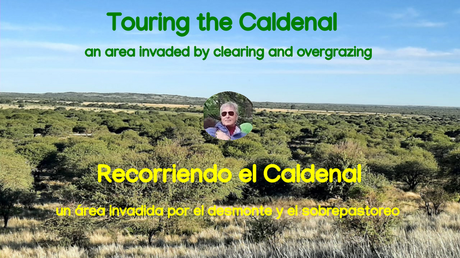
Whoever follows the contents of this blog knows that the theme is fundamentally plants, ecology and green spaces.
Either singularly or grouped in the form of gardens, forests, jungles and other protected areas where they can develop in their natural state.
Today I am going to talk about a characteristic plant of central Argentina, the caldén, especially located in the provinces of Buenos Aires, San Luis and especially La Pampa in the less humid area, that phytogeographic region that, due to its own characteristics, has been incorporated into Patagonia, although it actually retains few features that identify it with it.
The caldenal.

One of the problems that conspire against the normal development of the caldenal is the strong presence of exotic species that adds to its degradation by clearing and overgrazing.
For many years, the biodiversity of this pampas forest, unique in Argentina, has been gradually reduced and degraded due to clearing and, in areas where it is permitted, overgrazing.
The invasion of exotic plant species such as the so-called white quinoa has a great negative impact on the biodiversity of the native Calden forest.
Invasive plant species.
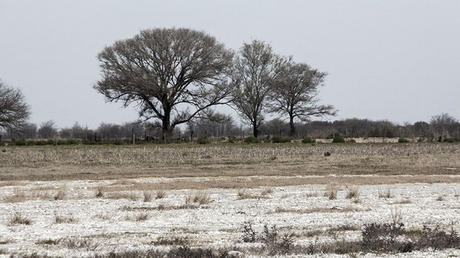
White quinoa is an herb native to Europe and a very common weed in agricultural areas of temperate regions, thriving in much of the Argentine territory.
Other weeds that, on the other hand, develop in total harmony with the caldenal are the puna grass and the black and white flechillas.
Until a few years ago the original surface of the caldenal was estimated at 3,500,000 hectares in the province of La Pampa, today less than half remains.
The caldén forest serves as habitat for many species of native fauna that find in it a natural refuge, sometimes against the same hunting that man practices, such as the wild cat and the puma, and also other species such as vizcachas and maras.
In the open spaces you can also find rheas and guanacos, sometimes sharing the productive area with cattle, horses and sheep.
In the caldenal there are also other species of trees that grow together with the caldén without problems such as the chañar and some carob trees, which form a relatively open forest and shrubs such as the piquillín, the llaollín and the tramontana.
Clearing and intensive exploitation of agriculture and livestock.
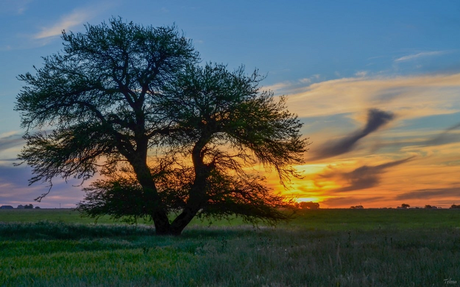
In this entire area there is a strong process of agriculturization with the consequent loss of a part of the native forest with the consequent danger of conservation of native species and invasion of exotic species.
The intensive exploitation of agriculture and livestock, the use of agrochemicals, overgrazing, fire as a management tool to obtain better pastures for livestock and control in the so-called "picadas", indiscriminate logging for commercial purposes and the systematic advance of the agricultural frontier, day by day accelerates even more the impoverishment of the scarce remaining forest. Which is currently less than half the original forest.
All this prevents the caldenal from fulfilling its ecological and environmental functions with due efficiency. The loss of the calden forest also affects numerous species of flora and fauna such as those mentioned above and many more that need it to live, thus becoming an extremely vulnerable ecosystem.
I hope the photos posted in this post are not just a memory in the not too distant future.

Quien sigue los contenidos de este blog sabe que la temática son fundamentalmente las plantas, la ecología y los espacios verdes.
Ya sea en forma singular o agrupadas bajo la forma de jardines, bosques, selvas y otras áreas protegidas donde se pueden desarrollar en estado natural.
Hoy les voy a hablar de una planta característica de la zona central argentina, el caldén, especialmente radicada en las provincias de Buenos Aires, San Luis y especialmente La Pampa en la zona menos húmeda, aquella región fitogeográfica que, por características propias, ha sido incorporada a la Patagonia, aunque conserve en realidad pocos rasgos que la identifiquen con ésta.
El caldenal.
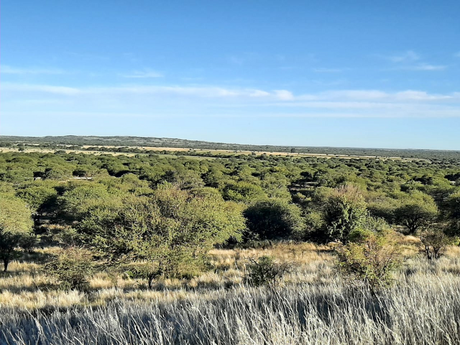
Uno de los problemas que conspiran contra el normal desarrollo del caldenal es la fuerte presencia de especies exóticas que se suma a su degradación por desmonte y sobrepastoreo.
Desde hace muchos años, la biodiversidad de este bosque pampeano, único en Argentina, se va reduciendo y degradando paulatinamente a causa de los desmontes y, en las áreas donde lo permite, el sobrepastoreo.
La invasión de especies exóticas vegetales como la llamada quinoa blanca tiene un gran impacto negativo sobre la biodiversidad del bosque nativo de caldén.
Especies vegetales invasoras.
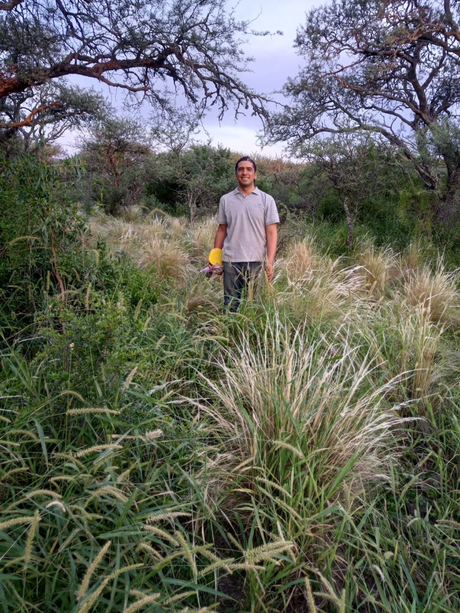
La quínoa blanca es una hierba originaria de Europa y una maleza muy común en las áreas agrícolas de las regiones templadas prosperando en gran parte del territorio argentino.
Otras malezas que,en cambio, se desarrollan en total armonía con el caldenal son el pasto puna y las flechillas negra y blanca.
Se estimaba hasta hace pocos años la superficie original del caldenal en 3.500.000 hectáreas en la provincia de la Pampa, hoy queda menos de la mitad.
El bosque de caldén sirve de hábitat para muchas especies de la fauna nativa que encuentran en él un refugio natural a veces contra la misma caza que practica el hombre, como el gato montés y el puma, y también otras especies como vizcachas y maras.
En los espacios abiertos también se pueden encontrar ñandúes y guanacos, a veces compartiendo el àrea productiva con el ganado vacuno, equino y ovino.
En el caldenal también se encuentran otras especies de árboles que crecen junto al caldén sin problemas como el chañar y algunos algarrobos, que forman un bosque relativamente abierto y arbustos como el piquillín, el llaollín y la tramontana.
El desmonte y la explotación intensiva de la agricultura y la ganadería.
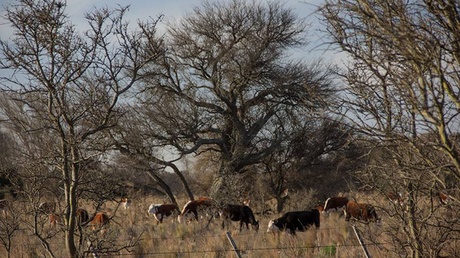
En toda esta área existe un fuerte proceso de agriculturización con la consecuente pérdida de una parte del bosque nativo con el consecuente peligro de conservación de especies nativas e invasión de especies exóticas.
La explotación intensiva de la agricultura y la ganadería, el uso de agroquímicos, el sobrepastoreo, el fuego como herramienta de manejo para la obtención de mejores pasturas para el ganado y de control en las llamadas "picadas", la tala indiscriminada con fines comerciales y el avance sistemático de la frontera agrícola, aceleran dia a dia aún más el empobrecimiento del escaso bosque subsistente. Que en estos momentos es menos de la mitad del bosque original.
Todo esto impide que el caldenal pueda cumplir sus funciones ecológicas y ambientales con la eficiencia debida. La pérdida del bosque de caldenes afecta además a numerosas especies de la flora y fauna como las mencionadas anteriormente y muchas más aún que necesitan de él para vivir convirtiéndose así en un ecosistema sumamente vulnerable.
Espero que las fotos publicadas en este post no sean solo un recuerdo en un futuro no muy lejano.
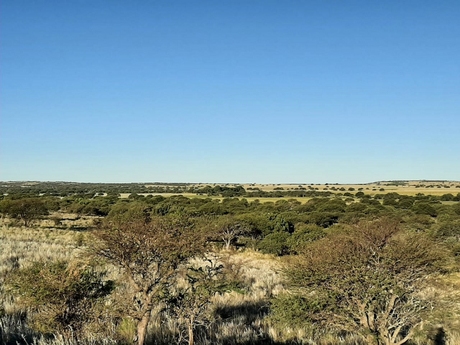
- Fuente de las imagenes / Sources images: Parque Nacional El Caldenal Sitio Oficial. / El Caldenal National Park Website Official

